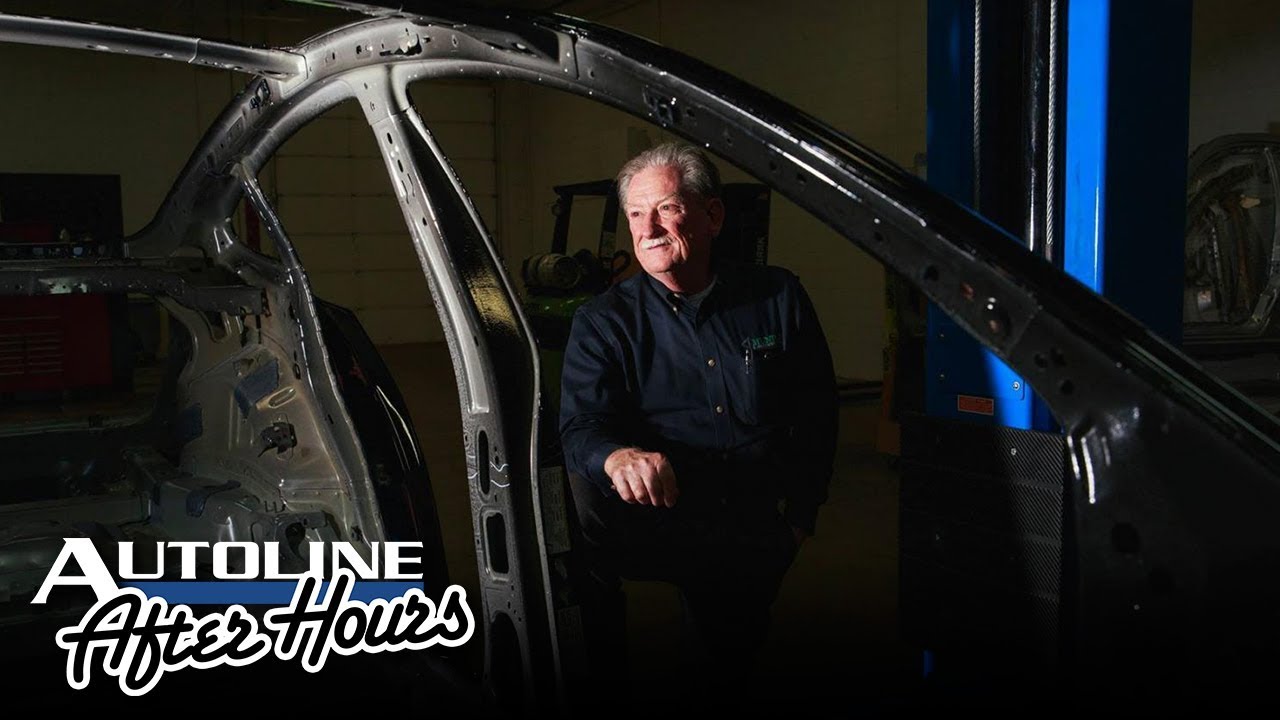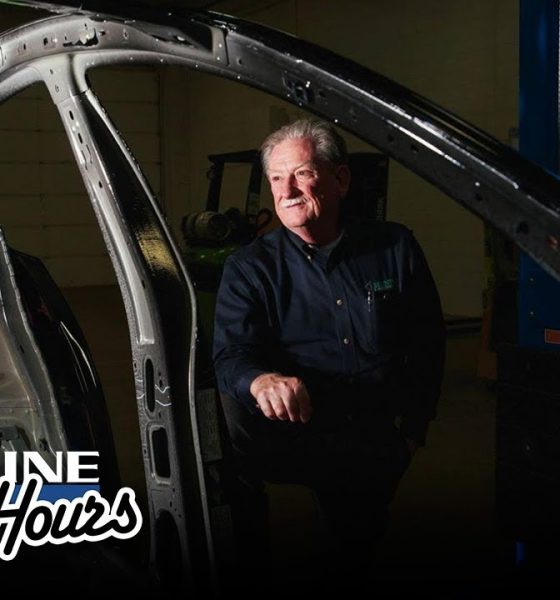

Investor's Corner
Tesla Model 3 teardown expert is exasperated with analysts’ inaccurate data
Auto teardown expert Sandy Munro knows a thing or two about the Tesla Model 3. After initially criticizing the electric sedan for its build quality, Munro eventually experienced a change of heart as he delved deeper into the Model 3’s electronics and tech. By the end of his analysis, the teardown expert admitted that the vehicle made him “eat a lot of crow.”
Tesla and Munro have since communicated, with the auto veteran sending the electric car maker a list of over 200 pro bono suggestions that could improve the Model 3’s body, which he believed was over-engineered. Munro himself spoke with Elon Musk, who explained that the person responsible for the Model 3’s body design had been terminated. In response, Munro told the CEO that the response was “not fast enough,” since Tesla “never should have hired (the engineer)” in the first place.
Munro has talked about the Tesla Model 3 and his findings several times in the past, particularly when he gets featured as a guest in YouTube’s Autoline After Hours. In his recent appearance, the teardown expert discussed the opportunities for Tesla and the Model 3 in China, as well as the rapid progress of large-scale construction projects such as Gigafactory 3. Munro also showed some exasperation with some of the assumptions being thrown at Tesla by analysts.
“I found a new source of pain. Analysts, talking about things. Holy mackerel, where these guys get their ideas from, or where they get their information from is beyond me, but I can tell you one thing for sure. I know they didn’t tear apart one of these cars. I know they don’t really look at what it is that’s going on. I’m sure they’re good readers. Readers are leaders, but sometimes, they’re liars,” Munro noted.
Munro related that he has personally dealt with some of these bad data in the past. Emphasizing his point, the teardown expert stated that some of the assumptions being thrown about the company are flat-out untrue.
“Quite frankly, I’ve been on a few of these little shows and somebody says, ‘Well, you know, such-and-such from wherever says this.’ And I’m sitting there and going, ‘Ah, that’s not true.’ ‘Well, he said it was.’ I said ‘Oh, it’s not true.’ And then I’ll reach over like, I’ve got my books right over here. Somebody says something that I know is not true, I’ve got pictures, I’ve got numbers, I got data up the yin-yang. There’s nobody gonna argue with me, that’s for sure. And if I don’t know the answer, I got a whole 90 guys that’ll (be) happy to tell you which ends up. These other guys, I don’t know, I think it’s web searches and blogs and who knows, I don’t know. But it ain’t, it’s not for real,” Munro said.
One thing that really impressed Munro with the Tesla Model 3 was the vertical integration between the electric sedan’s software and hardware. The way that Tesla uses one component for multiple tasks was also lauded as a big advantage against rival automakers. The teardown expert has also spoken very highly of Tesla’s batteries, stating that the Model 3’s 2170 cells are the best that he has seen yet, being far above those that are used in the Chevy Bolt EV and BMW i3.
Watch Sandy Munro’s take on analyst’s inaccuracies in the video below.

Investor's Corner
Tesla stock closes at all-time high on heels of Robotaxi progress

Tesla stock (NASDAQ: TSLA) closed at an all-time high on Tuesday, jumping over 3 percent during the day and finishing at $489.88.
The price beats the previous record close, which was $479.86.
Shares have had a crazy year, dipping more than 40 percent from the start of the year. The stock then started to recover once again around late April, when its price started to climb back up from the low $200 level.
This week, Tesla started to climb toward its highest levels ever, as it was revealed on Sunday that the company was testing driverless Robotaxis in Austin. The spike in value pushed the company’s valuation to $1.63 trillion.
Tesla Robotaxi goes driverless as Musk confirms Safety Monitor removal testing
It is the seventh-most valuable company on the market currently, trailing Nvidia, Apple, Alphabet (Google), Microsoft, Amazon, and Meta.
Shares closed up $14.57 today, up over 3 percent.
The stock has gone through a lot this year, as previously mentioned. Shares tumbled in Q1 due to CEO Elon Musk’s involvement with the Department of Government Efficiency (DOGE), which pulled his attention away from his companies and left a major overhang on their valuations.
However, things started to rebound halfway through the year, and as the government started to phase out the $7,500 tax credit, demand spiked as consumers tried to take advantage of it.
Q3 deliveries were the highest in company history, and Tesla responded to the loss of the tax credit with the launch of the Model 3 and Model Y Standard.
Additionally, analysts have announced high expectations this week for the company on Wall Street as Robotaxi continues to be the focus. With autonomy within Tesla’s sights, things are moving in the direction of Robotaxi being a major catalyst for growth on the Street in the coming year.
Elon Musk
Tesla needs to come through on this one Robotaxi metric, analyst says
“We think the key focus from here will be how fast Tesla can scale driverless operations (including if Tesla’s approach to software/hardware allows it to scale significantly faster than competitors, as the company has argued), and on profitability.”

Tesla needs to come through on this one Robotaxi metric, Mark Delaney of Goldman Sachs says.
Tesla is in the process of rolling out its Robotaxi platform to areas outside of Austin and the California Bay Area. It has plans to launch in five additional cities, including Houston, Dallas, Miami, Las Vegas, and Phoenix.
However, the company’s expansion is not what the focus needs to be, according to Delaney. It’s the speed of deployment.
The analyst said:
“We think the key focus from here will be how fast Tesla can scale driverless operations (including if Tesla’s approach to software/hardware allows it to scale significantly faster than competitors, as the company has argued), and on profitability.”
Profitability will come as the Robotaxi fleet expands. Making that money will be dependent on when Tesla can initiate rides in more areas, giving more customers access to the program.
There are some additional things that the company needs to make happen ahead of the major Robotaxi expansion, one of those things is launching driverless rides in Austin, the first city in which it launched the program.
This week, Tesla started testing driverless Robotaxi rides in Austin, as two different Model Y units were spotted with no occupants, a huge step in the company’s plans for the ride-sharing platform.
Tesla Robotaxi goes driverless as Musk confirms Safety Monitor removal testing
CEO Elon Musk has been hoping to remove Safety Monitors from Robotaxis in Austin for several months, first mentioning the plan to have them out by the end of 2025 in September. He confirmed on Sunday that Tesla had officially removed vehicle occupants and started testing truly unsupervised rides.
Although Safety Monitors in Austin have been sitting in the passenger’s seat, they have still had the ability to override things in case of an emergency. After all, the ultimate goal was safety and avoiding any accidents or injuries.
Goldman Sachs reiterated its ‘Neutral’ rating and its $400 price target. Delaney said, “Tesla is making progress with its autonomous technology,” and recent developments make it evident that this is true.
Investor's Corner
Tesla gets bold Robotaxi prediction from Wall Street firm
Last week, Andrew Percoco took over Tesla analysis for Morgan Stanley from Adam Jonas, who covered the stock for years. Percoco seems to be less optimistic and bullish on Tesla shares, while still being fair and balanced in his analysis.

Tesla (NASDAQ: TSLA) received a bold Robotaxi prediction from Morgan Stanley, which anticipates a dramatic increase in the size of the company’s autonomous ride-hailing suite in the coming years.
Last week, Andrew Percoco took over Tesla analysis for Morgan Stanley from Adam Jonas, who covered the stock for years. Percoco seems to be less optimistic and bullish on Tesla shares, while still being fair and balanced in his analysis.
Percoco dug into the Robotaxi fleet and its expansion in the coming years in his latest note, released on Tuesday. The firm expects Tesla to increase the Robotaxi fleet size to 1,000 vehicles in 2026. However, that’s small-scale compared to what they expect from Tesla in a decade.
Tesla expands Robotaxi app access once again, this time on a global scale
By 2035, Morgan Stanley believes there will be one million Robotaxis on the road across multiple cities, a major jump and a considerable fleet size. We assume this means the fleet of vehicles Tesla will operate internally, and not including passenger-owned vehicles that could be added through software updates.
He also listed three specific catalysts that investors should pay attention to, as these will represent the company being on track to achieve its Robotaxi dreams:
- Opening Robotaxi to the public without a Safety Monitor. Timing is unclear, but it appears that Tesla is getting closer by the day.
- Improvement in safety metrics without the Safety Monitor. Tesla’s ability to improve its safety metrics as it scales miles driven without the Safety Monitor is imperative as it looks to scale in new states and cities in 2026.
- Cybercab start of production, targeted for April 2026. Tesla’s Cybercab is a purpose-built vehicle (no steering wheel or pedals, only two seats) that is expected to be produced through its state-of-the-art unboxed manufacturing process, offering further cost reductions and thus accelerating adoption over time.
Robotaxi stands to be one of Tesla’s most significant revenue contributors, especially as the company plans to continue expanding its ride-hailing service across the world in the coming years.
Its current deployment strategy is controlled and conservative to avoid any drastic and potentially program-ruining incidents.
So far, the program, which is active in Austin and the California Bay Area, has been widely successful.








